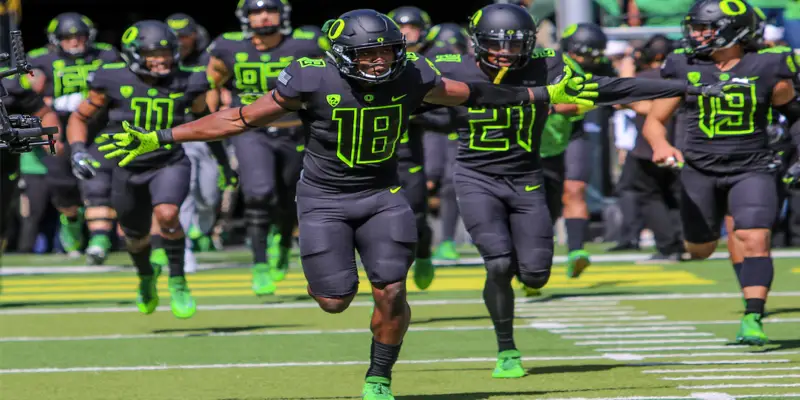The Ducks have to get better on defense. Coach Willie Taggart knows this, Coach Jim Leavitt knows this and the fans know this.
Besides getting better players how do you do this?
Good defense starts with taking away or limiting the opponent’s run game. The easiest offensive play is to snap the ball and hand it off. If an offense can do this successfully, there is not much incentive to doing anything else.
The rush defense from the Ducks in 2016 was one of the worst in the nation. They allowed 5.67 yards per carry, ranking 122nd in the nation and gave up 38 rushing touchdowns, ranking 127th — the second most in the country. It is hard to win football games when you give up 3.16 rushing touchdowns per game.
To play great run defense, it takes all 11 players to execute disciplined, assignment-based football. One of those assignments is “Setting the edge” and this means one player on each side of the defense has the responsibility of not letting the ballcarrier cross their face when they declare to their side.
Setting the Edge
The edge defender cannot let the ballcarrier run past their outside shoulder: they must keep that shoulder unblocked and cannot be outflanked, or else the ballcarrier will be able to get (the edge) to the outside — away from the rest of the defensive help. There is only one player with this responsibility when the ball is declared to a side, so it is critical for this player to know the assignment and execute it properly or else big plays will happen.
When this is properly executed the ballcarrier looks to go outside, but sees the edge player there and has to cut it up where the other linebackers, lineman and defensive backs are doing their assignments of pursuing the ballcarrier from their position and forcing him to run to the edge player. This reduces the space and eventually, the ballcarrier has nowhere to run. This is the theory behind a good run defense.
Another way to think about this is if your dog escaped from your yard. You would immediately want someone to reduce the open space he can run into to make it easier to get him. Now, imagine someone is there to wall him off from running in the open space and you and your nine other friends can get him. It would make it much easier to reduce the space now that your first friend is there — forcing your dog to run in a smaller area. Without him, your dog would have too much space and he could now run wherever he wants leaving you chasing air.
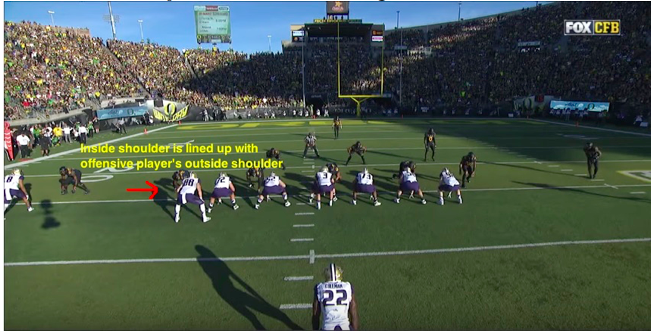
Good Start
Looking at the film (above) on this play, Oregon’s edge defender on the left side starts out in a good position. His inside shoulder is on the Washington player’s outside shoulder and the defender is square to the line of scrimmage.
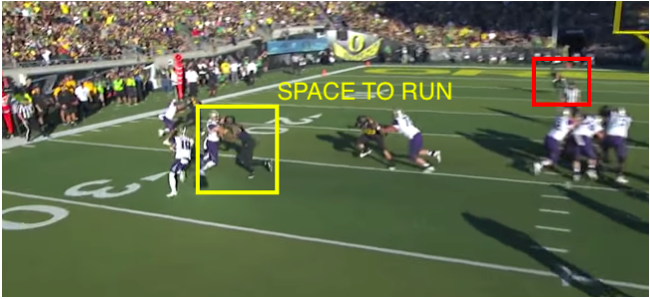
Bad Finish
He quickly loses his position (above) and the offensive player seals his outside shoulder giving the ballcarrier the edge to run around. Notice the space between the ballcarrier and the unblocked defender.
This illustrates (above) how important it is to set the edge and force the ballcarrier back towards the pursuit. Otherwise, the ballcarrier has too much room to run.
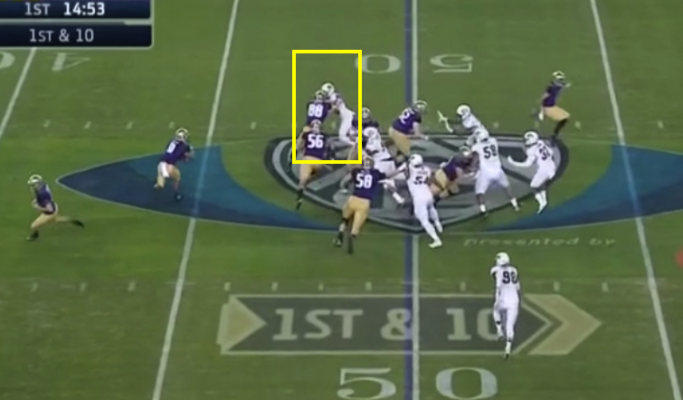
Outside Shoulder Free
Now we take a look at Jim Leavitt’s defense from Colorado (above). This is a good example because it is against the same blocker for Washington and has the same assignment to reach block the defender’s outside shoulder. What stands out defensively is the aggressiveness and superior technique the much smaller Colorado player has over the bigger Oregon defensive lineman. When coaches say, “play with passion and discipline,” this is a great example of playing with both.
From the start of the play (above), he knocks back the offensive player three yards off the ball. This speeds the game up for the running back because now he has to make his first cut at five yards behind the line of scrimmage, instead of at the heels of his lineman.
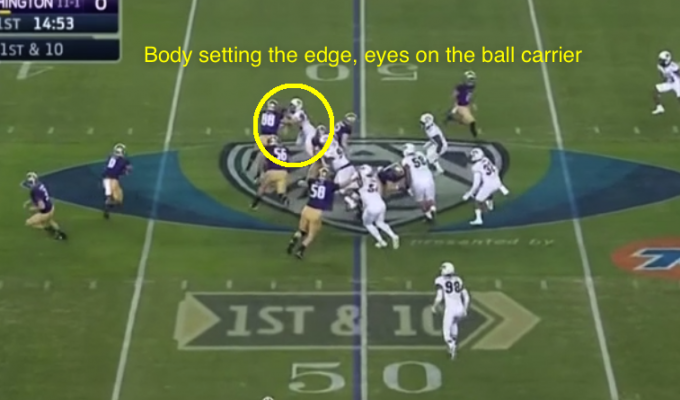
Not Satisfied
My favorite part of the play (above) is what the defender does next, because it shows the defenders are not content to just push back their blocker. On defense you cannot trade one for one, because this allows for the offensive ballcarrier’s one-on-one with a defender, giving the offense matchups they want. Defenses are always trying to make the math turn in their favor.
This ‘edge’ defender (above) shows an example of defeating the blocker, using his eyes, getting off of the block and adding to the defensive numbers, all on one play. This is the type of technique and effort it takes to play great run defense each and every run play.
Even though he does not make the tackle (above), he shows how to reduce space to the running back by setting the edge. Once he has done his initial job in making the back declare, he uses his eyes and technique to help push the numbers in the favor of the defense.
Setting the edge is a huge component of improving a bad run defense. As a defensive coordinator, the importance of the edge defender is one of the first concepts I install in the spring and emphasize each week in game planning during the season.
This is another area to watch for the Oregon defense to grow and I expect they will become much better at it this season.
Coach Ruskin Fiegenbaum
Beaverton, Oregon
Ruskin has been following the Ducks since the ’94 Rose Bowl. He graduated from the University of Oregon in 2007 and has been coaching football in the Portland-Metro area since 2008.

